6 : The Robertson family1
John Robertson (1802-1875)
Irving's grandfather, John Robertson was born in Moraystown, Parish of Pretty, Nairnshire in Scotland,
in 1802. In 1832 he emigrated to Toronto Canada, a town that had been established just 40 years earlier.
By 1839 he had established a thriving wholesale dry goods business in Yonge Street. His younger brother,
Charles Robertson also came to Toronto and from 1850 he ran a retail dry goods business in King Street.
John travelled back to Scotland in 1841 to marry childhood sweetheart Margaret Sinclair and together they
returned to Toronto. Margaret who was born in 1810 at the farm of Goathill, near Stornoway, was the daughter
of Hector Sinclair of Kerrowaird in the Parish of Pretty, Nairnshire. John and Margaret would have four
sons and one daughter Anne, who died early aged six years.
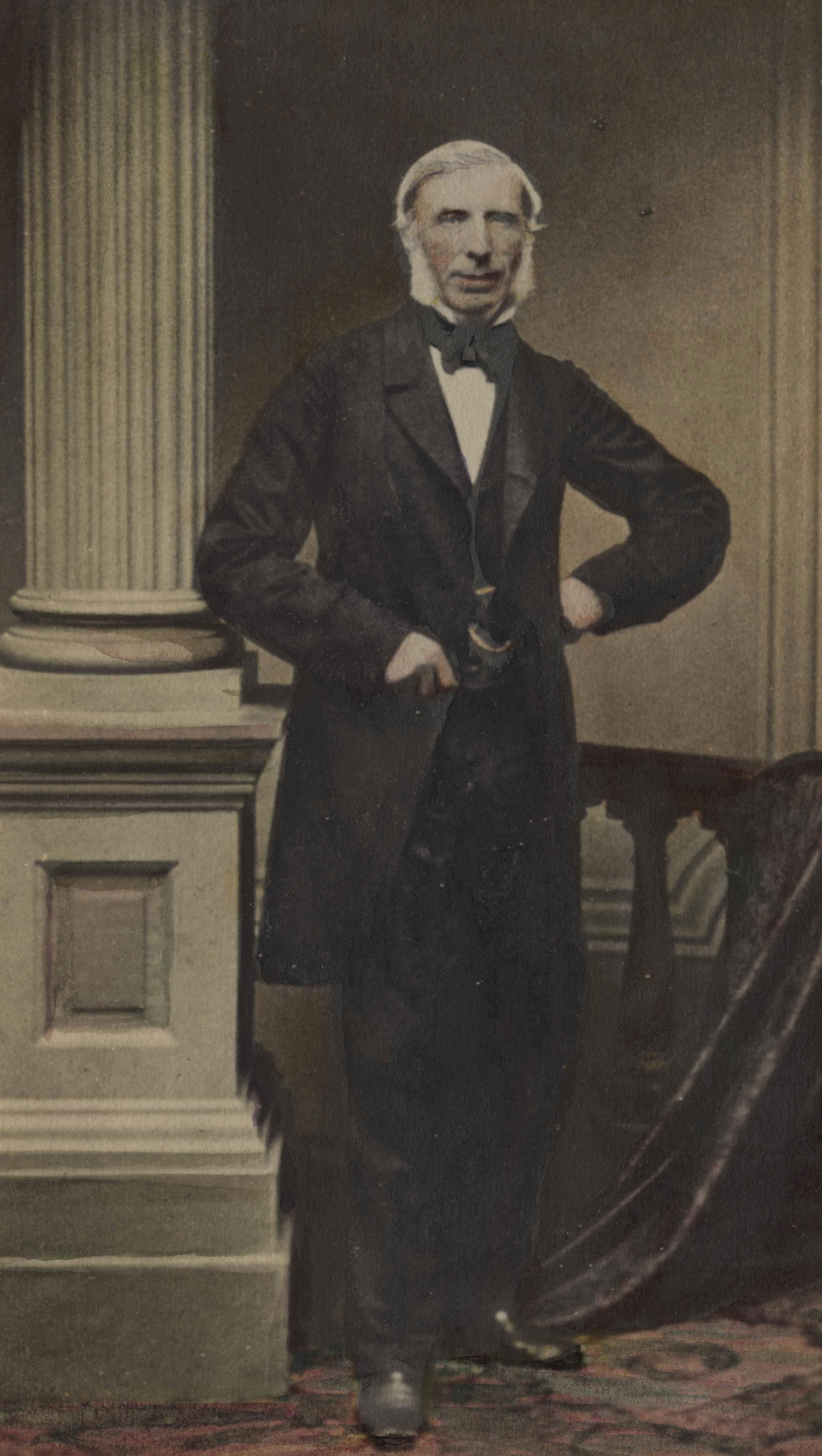
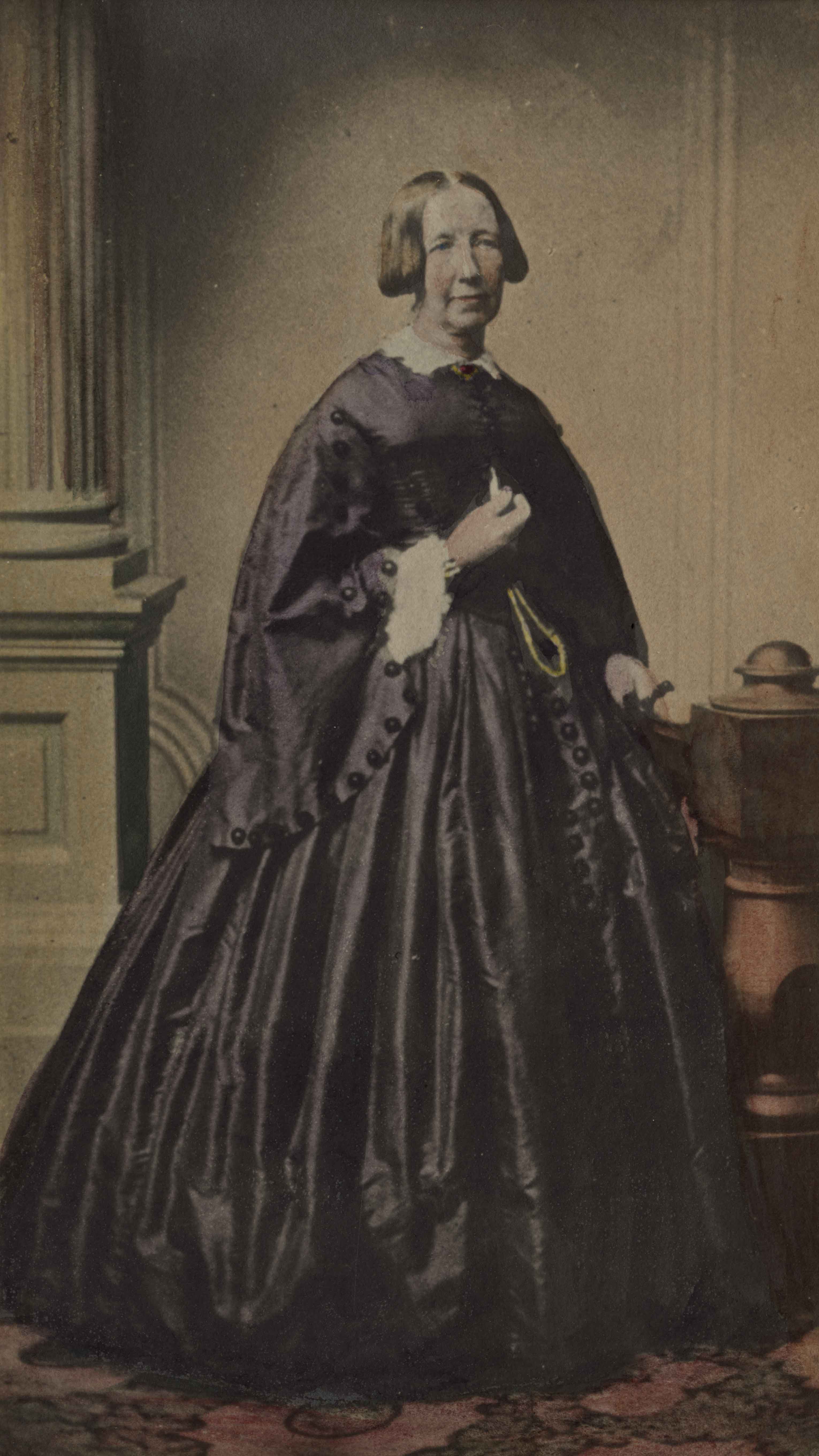
John and Margaret Robertson
John was a member of St Andrew's Society, Vice President Board of Trade, a leading member of the Clan Donnachaifh
(Robertson) in Toronto, and a descendant of Struan, Chief of the Clan.
By the early 1870s, John's business had moved to larger premises in Wellington Street and by now the firm
was known as John Robertson Son & Co. Three of his four sons, Hector Sinclair Robertson, Alexander James
Robertson and Charles Robert Robertson would join the firm though Charles may not have been there for long.
John continued in charge of the business until his death in 1875.
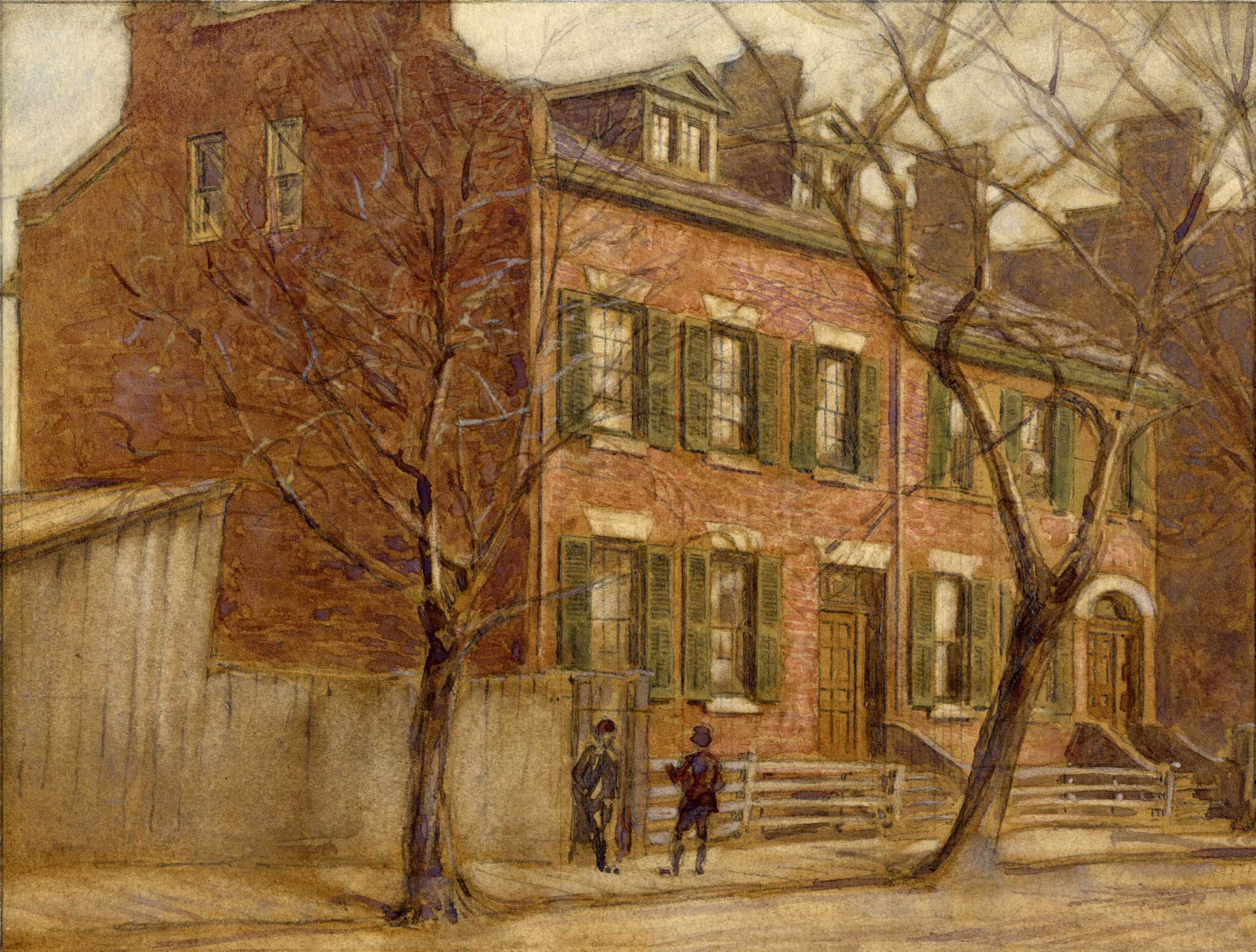
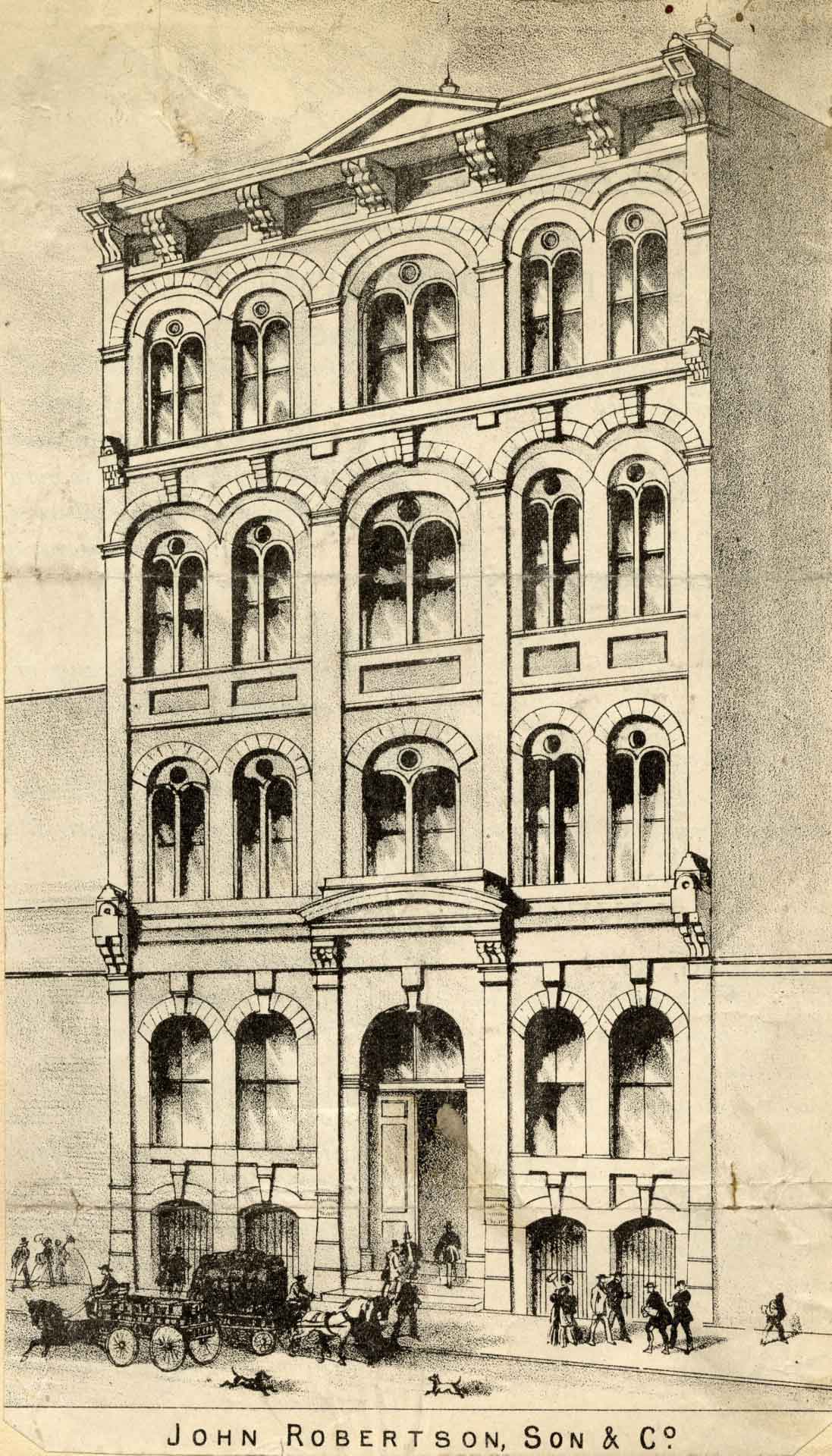
John Robertson's home in Simcoe St and the business in Wellington St.
John Ross Robertson (1841-1918)
John and Margaret's eldest son was John Ross Robertson, Irving's father. He had a radically different
career to that of his father and younger brothers. He was educated at Upper Canada College from 1850 - 1851
and again 1854 - 1858. At an early age he began collecting pictures and historical memorabilia. In 1857,
whilst at Upper Canada College he began the monthly College Times, which he typeset and printed at home.
When he moved to the Model Grammar School in 1860, he produced another paper, the Boys' Times.
He left school in 1861 and obtained job-printing contracts for Toronto newspapers, and also wrote for and
published Young Canada Sporting Life. He had a great interest in sports and had shown an aptitude for
swimming, hockey and rowing. He also published Robertson's Railway Guide, and from 1863-65 the Grumbler, a
satirical weekly.
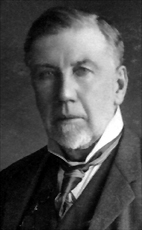 In 1865 he was appointed city editor for the Globe. He was co-proprietor of the Telegraph from 1866-1872.
His next move was to England where he was resident correspondent and business representative in London for
the Globe. He remained there until 1875. On returning to Toronto, he became business manager for the
Canada First organ, the Nation. One of the principal contributors to the Nation was Goldwin Smith who was
very impressed with Robertson's performance and offered Robertson a substantial sum to found a paper
'for the masses not the classes'. Robertson saw an opportunity to become independent of another newspaper owner and
rather than spending Smith's money, he borrowed a much smaller sum from his brother Alexander. This he
used as a down payment on a vacant newspaper premises, and thus The Evening Telegram newspaper was born.
Its first issue appeared on 18 April 1876. Under Robertson's reign the
paper was a huge success, and by the mid 1880s, he was a wealthy and powerful man.
In 1865 he was appointed city editor for the Globe. He was co-proprietor of the Telegraph from 1866-1872.
His next move was to England where he was resident correspondent and business representative in London for
the Globe. He remained there until 1875. On returning to Toronto, he became business manager for the
Canada First organ, the Nation. One of the principal contributors to the Nation was Goldwin Smith who was
very impressed with Robertson's performance and offered Robertson a substantial sum to found a paper
'for the masses not the classes'. Robertson saw an opportunity to become independent of another newspaper owner and
rather than spending Smith's money, he borrowed a much smaller sum from his brother Alexander. This he
used as a down payment on a vacant newspaper premises, and thus The Evening Telegram newspaper was born.
Its first issue appeared on 18 April 1876. Under Robertson's reign the
paper was a huge success, and by the mid 1880s, he was a wealthy and powerful man.
Not all of his wealth came from The Telegram. Robertson began serializing American novels in the
newspaper and then moved to publishing books. The works of authors such as Mark Twain among other popular
novels appeared and within just seven years, he had published nearly two million copies for which none of
the authors received royalties. He was one of the busiest literary pirates of the nineteenth century.
Undoubtedly this made him rich but his motive was to force a change in the Canadian dependence on British
copyright laws, the loopholes in which permitted him to publish other people's work. After two decades, the
laws were changed and the piracy ended.
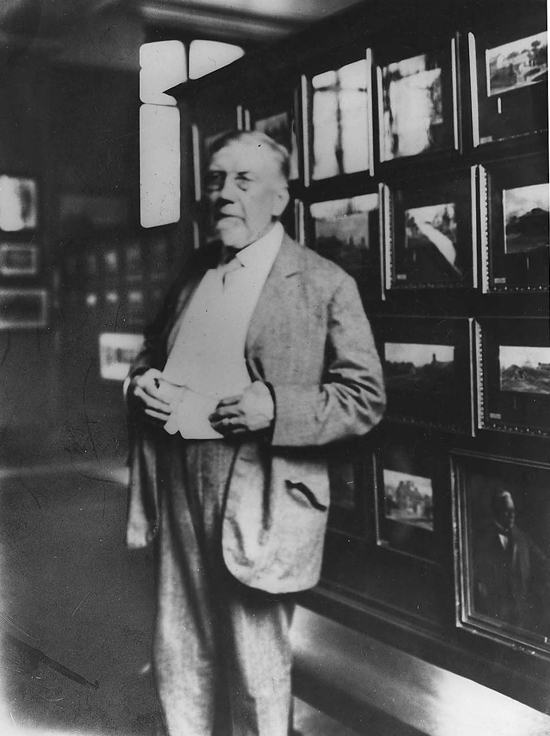 From this time he devoted himself increasingly to historical research and collecting, amateur sports, masonic
affairs and philanthropy. Between 1912 and 1917 he donated to the Toronto Public Library a collection of
more than 4,000 historical paintings, reproductions, original maps and documents.
From this time he devoted himself increasingly to historical research and collecting, amateur sports, masonic
affairs and philanthropy. Between 1912 and 1917 he donated to the Toronto Public Library a collection of
more than 4,000 historical paintings, reproductions, original maps and documents.
He personally published a number of significant works including the six-volume series Landmarks of Canada
in which is detailed the history of Toronto from 1792-1914. The Diary of Mrs John Graves Simcoe was
published in 1911. The two-volume 2,000-page History of Freemasonry in Canada appeared in 1899.
J Ross Robertson in his library in 1912
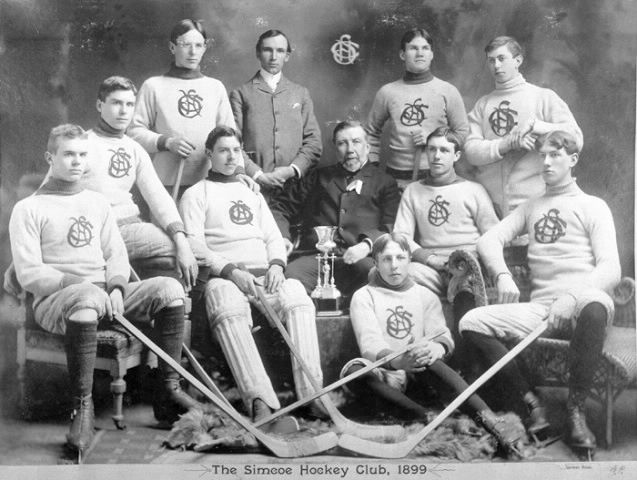 He was president of the Ontario Hockey Association from 1899-1905.
He was president of the Ontario Hockey Association from 1899-1905.
J Ross Robertson married Maria Louisa Gillbee in 1871. She was the daughter of Earle Edward Matthew Gillbee, originally
from Sheffield, England.
They would have three children.
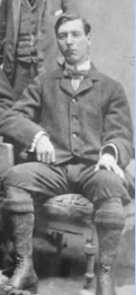 John Sinclair Robertson was born in London in 1872 (while his father was working there for the Globe). He
excelled at hockey and rowing and worked as a journalist. Known as Cully to his friends, his life was cut
short by tabes dorsalis, his death at age 45 in 1918 coming just three weeks after the death of his father.
John Sinclair Robertson was born in London in 1872 (while his father was working there for the Globe). He
excelled at hockey and rowing and worked as a journalist. Known as Cully to his friends, his life was cut
short by tabes dorsalis, his death at age 45 in 1918 coming just three weeks after the death of his father.
Cully Robertson
Helen Goldwin Robertson ('Goldie') was born in 1880.
Irving Earle Robertson was born in 1882.
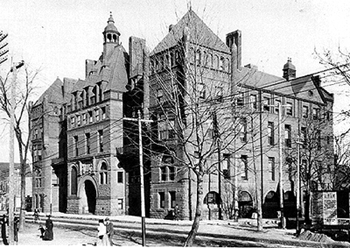 J Ross Robertson's philanthropy was indeed impressive, especially to the Toronto Hospital for Sick Children.
The background to this interest lay in family tragedy. On 7 March 1881 his daughter 'Goldie' died as a result
of scarlet fever and on this same day, his three year old niece Grace (daughter of brother Alexander) also
died. These sad events gave focus to the rather meagre services available for sick children in Toronto at
that time. Under his leadership a new 320-bed hospital was opened in College Street in 1891, ten years after
'Goldie's' death, and J Ross Robertson personally funded all of the equipment.
J Ross Robertson's philanthropy was indeed impressive, especially to the Toronto Hospital for Sick Children.
The background to this interest lay in family tragedy. On 7 March 1881 his daughter 'Goldie' died as a result
of scarlet fever and on this same day, his three year old niece Grace (daughter of brother Alexander) also
died. These sad events gave focus to the rather meagre services available for sick children in Toronto at
that time. Under his leadership a new 320-bed hospital was opened in College Street in 1891, ten years after
'Goldie's' death, and J Ross Robertson personally funded all of the equipment.
He built the Lakeside Home for Little Children on Toronto Island in 1883, a convalescent retreat. He funded
the building of a five-storey nurses' residence and college in 1905, and oversaw the building of a milk
pasteurization plant in 1909.
He was a hospital trustee from 1885 and chairman of the Board of Trustees from 1891-1918. At his death in
1918, his will stipulated a special endowment fund for the hospital based on the profits from The Telegram.
His dear wife Maria died aged 39 in 1886.
J Ross Robertson married a second time in 1888 to Jessie Elizabeth Holland who was 20 years his junior. They
would have no children. Jessie was the daughter of George B Holland, a prominent Toronto insurance man.
The Holland family lived next-door to the Robertson's in Sherbourne St.
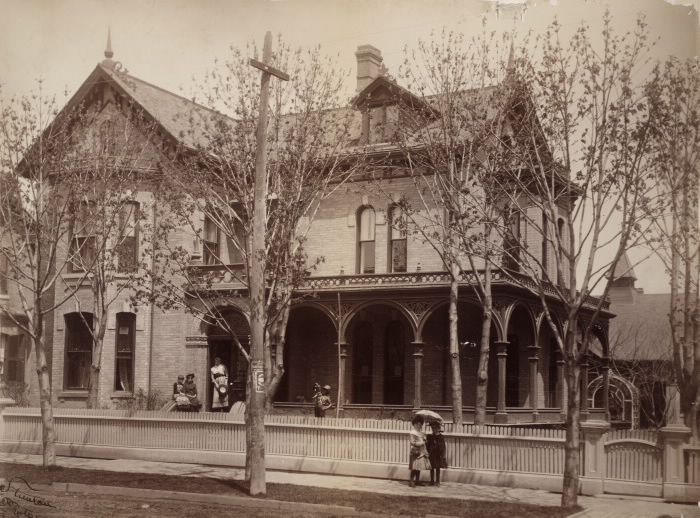 'Culloden House', John Ross Robertson's home in Sherbourne St.
'Culloden House', John Ross Robertson's home in Sherbourne St.In 1914 John Ross Robertson was made a Fellow of the Royal Society of Canada. In December 1916, he declined
the offer of a senatorship and a knighthood.
J Ross Robertson died on 31 May 1918. His widow Jessie would later (22/6/1920) marry Dr Irving Cameron, a
noted Toronto surgeon who lived a few houses down Sherbourne Street. She was aged 59 and he 64.
Irving Earle Robertson (1882-1932)
Irving attended the Model School in Toronto, close to his home in Sherbourne St. He enrolled in Upper
Canada College in 1895 and during his time there was awarded prizes in Classics and French. He matriculated
in 1899, and then spent two years at Toronto University (1st class honours in French) and was awarded a
scholarship in Classics. He then attended Brasenose College, Oxford from where he graduated in 1904 with a
BA and honours in classics and history.
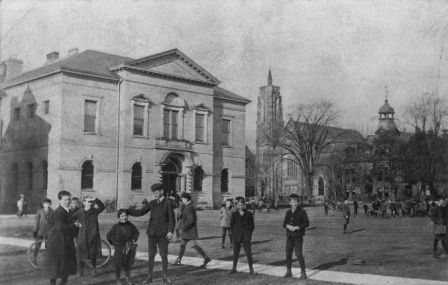 Model School, Toronto
Model School, Toronto
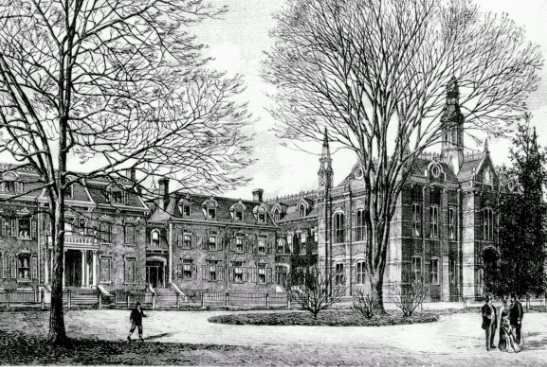 Upper Canada College
Upper Canada College
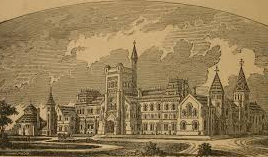 University of Toronto
University of Toronto
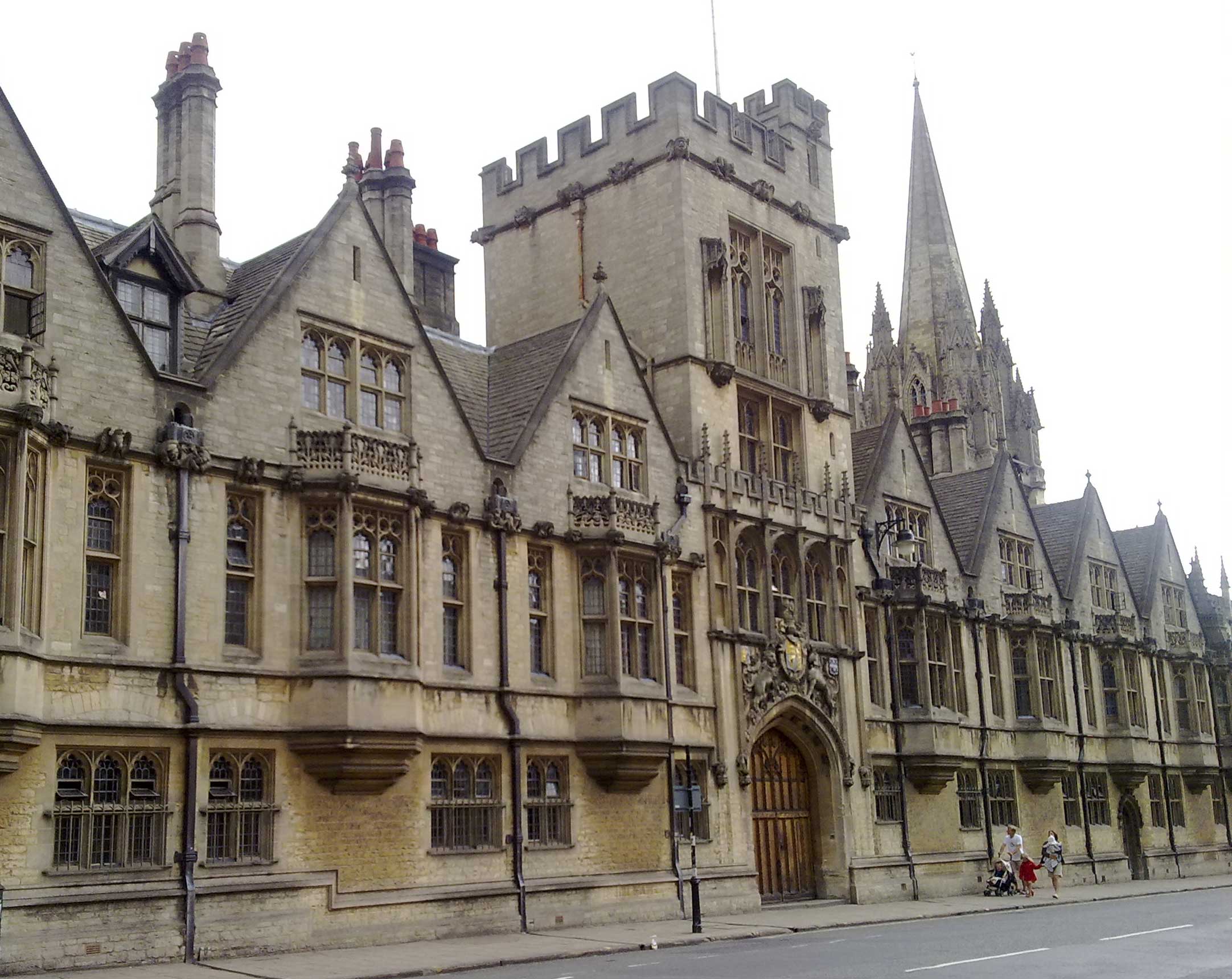
Brasenose College, Oxford University
After a brief time travelling abroad he joined the staff of The Evening Telegram. There he 'started at
the bottom', in business, finance, drama, sport & other sections. He was parliamentary reporter based in
Ottawa for a time from 1911 before moving 'upstairs' to the editorial department. In 1928 he became Editor-in-Chief
of The Evening Telegram.
His writing talent was evident from an early age, including the use of humour. Below is a letter that he
wrote to his father when aged 10 years.
By the time he was 16 years of age his composition skills had progressed and again his use of humour was
to the fore. Evidence of this is seen in a letter to his cousin Kathleen, written in August 1898.
When Irving died in 1932, extensive tributes were published in local newspapers including this fragment from the Evening Telegram 5 January, 1932.
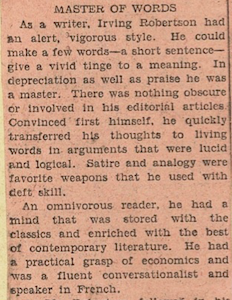
 His association with the Hospital for Sick Children started on 10 June 1899 when aged 17 years he turned the
first sod on the College St site for the new hospital.
His association with the Hospital for Sick Children started on 10 June 1899 when aged 17 years he turned the
first sod on the College St site for the new hospital.
He would later follow in his father's footsteps, joining the board of trustees of the hospital and becoming
vice-chairman for four years. In that role he oversaw the planning and completion of a new convalescent
facility for children at Thistletown, the Lakeside Home built by his late father being no longer adequate.
Irving became chairman of the board of trustees on the retirement in 1930 of H. H. Williams.